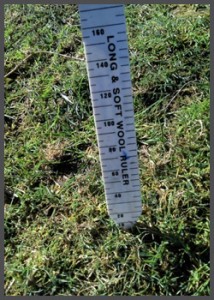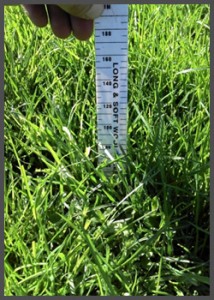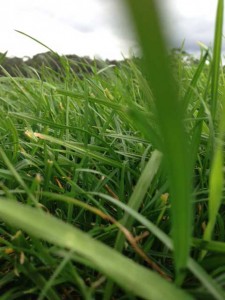Gibberellic acid is a naturally occurring plant hormone that is produced in higher quantities in warmer months. During the colder months, its production is low, hence plant growth is slower. The idea behind the application of the hormone is that it will stimulate cell expansion, resulting in leaf and stem elongation.
It can be used quite successfully from Late May to Mid September. Following an application of Gibberellic Acid on pasture, rapid growth occurs this is sometimes lighter in colour for the first couple of weeks after application, this colour change does not affect pasture quality. Visual responses following an application can generally be seen within 10 days and generally will provide accelerated growth for up to 3 to 4 weeks provided adequate soil moisture and nutrition is available. Applications @ 28 day intervals would be suitable, there is no withholding period, however best results if left ungrazed for 21 days. Pasture cover is recommended to be at least 1200kg dm/ha, results on first year new pasture have been poor.
You can get Gibberellic Acid in both granular and liquid form. I have only used it in liquid form (Gala, Growth Regulator from Victorian Chemicals). The amount needed is only about 40-80ml per hectare sprayed out in 100 Lt of water per hectare. We have applied it via our boomspray making sure to give it a good clean out first. The granular form needs to be applied via a boomspray as well.
Applied properly it works really well. Below are photos of a recent application at Vermillion Fire Alpaca Stud, the post application photo was only about 10 days post application so it is only just starting to become obvious. The control photo is a paddock alongside but untreated.
The results we have seen at other properties including my own have been similar. I have several clients who now use it every winter to get that additional growth they need in their paddock rotation to cut down on supplementary feeding. When you consider that a 1lt bottle only costs about $150 and that amount at 60ml/Ha would do just under 17 hectares it works out pretty cheap compared to hay and grain prices. Trials have consistently shown that when used as directed 80mL/ha of GALA will increase pasture dry matter by approx 20kg/ha/day for 3 – 4 weeks after application. So with a 21 day spell you should see 420kg of additional feed at a time when plant growth is minimal.
Now back to the question of what this all has to do with alpaca?
Well nourished alpaca getting the bulk of their diet from readily available green feed are healthy and more productive which makes the job of raising them so much easier.
Justin Weaver
Weaver Livestock Pty Ltd.
20th September 2011
On advice from Justin this is the second year we will use Gibberellic acid on our pastures. It is easily applied and fits well with our strip grazing regime. The results have been great and it has significantly cut down on the amount of additional feed required. In addition to the pasture our females (including crias and weanlings – at this time of year we run them as one group, approximately 60 animals) have access to grass hay – curently going through about one bale per week and 100 grams each of oats per day.
Update as of 19th July 2013
As part of our management routine we weigh our animals monthly. Our last weights taken on 19th July 2013 showed all of our stock have continued to put on weight over the winter. I have now reduced their oats to 50 grams each per day this week and will halve again in two weeks and stop altogether in three weeks. Obviously we will continue to weigh and adjust feed accordingly.
The below photographs were taken on our property in Belgrave South, Victoria, 3-4 weeks post the application of Gibberellic Acid. The paddock is divided into three paddocks and is used for rotational grazing. It had been grazed for one week by 60 alpaca days before the Gibberellic Acid was applied. Paddock size is half a hectare.












